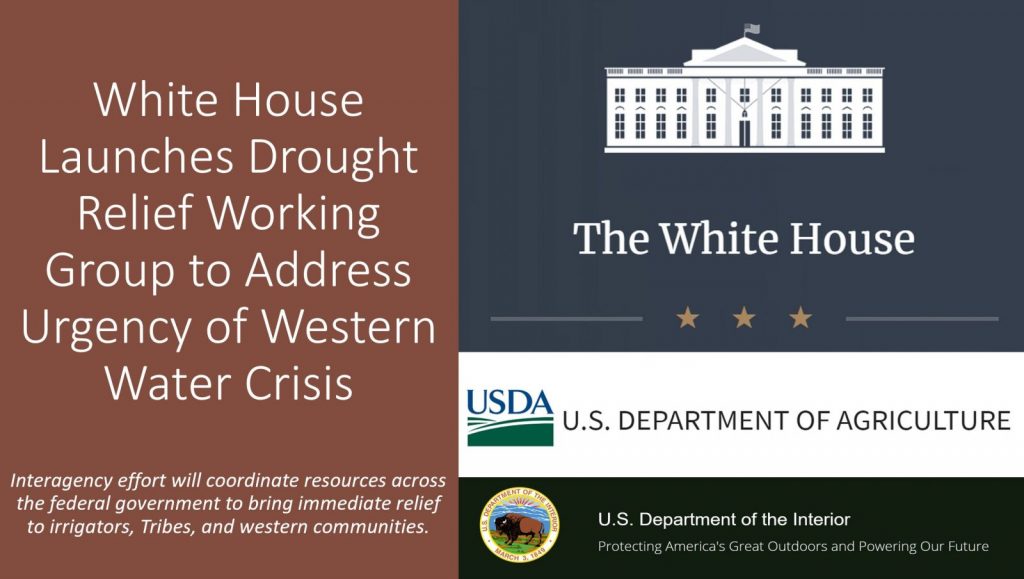Part 2: Drought and Our Plans to Deal With it are Running Dry
Environmental Policy Brief # 126 | By: Todd J. Broadman | September 6, 2021
Header photo taken from: WRAL Techwire
Follow us on our social media platforms above
Browse more environmental policy briefs here
Photo taken from: NASA Earth Observatory
Policy Summary
This brief is another segment to help further explain the megadrought in the U.S. Southwest. The megadrought now encompasses Arizona, Nevada, Utah and parts of California, Colorado and New Mexico. This region has undergone chronic drought conditions since 2000, the year that the Lake Mead reservoir (the largest in the U.S. and now at an historic low) was considered close to full.
Over long periods of time, droughts are fairly common – as indicated to researchers by tree ring studies. This drought though, is unique in that about half of its severity is attributed to human behavior and the resultant impacts of global warming.
Researchers look for tightly configured tree rings to indicate periods of low moisture and drought. Applying this method, to find similar period of megadrought we would have to go back to the late 1500s. One such drought in the 2nd century lasted for five decades. This drought is the second-driest since the 9th century.
We have reached a new “first”: the federal government has officially declared a water shortage in the Colorado River basin. This declaration triggers mandatory water reductions to certain states and Mexico in 2022. Under current conditions, water demand levels for energy and agriculture cannot be met. Water reductions will be carried out by reducing the volume of water “releases” from dams, principally the Glen Canyon and Hoover. The combination of demand and an overestimation of precipitation in the form of mountain snowpack has led us to this shortage.
Photo taken from: Barn Media
Given ongoing historic drought and low runoff conditions in the Colorado River Basin, downstream releases from Glen Canyon Dam and Hoover Dam will be reduced in 2022 due to declining reservoir levels. These downstream releases in the lower basin feed the states of California, Arizona, and Nevada and the reductions represent the first “shortage” declaration. These states are currently using their full allotment of 7.5 million acre-feet of fresh water. The upper basin states of Colorado, Utah, New Mexico, and Wyoming are allotted 4 million acre-feet and are collectively using just under that amount.
The overestimation on the part of planners led to an overpromising of water. The allotments mentioned above were part of an historic 1922 agreement to share the Colorado River known as the Colorado River Compact.
On the ground, U.S. Agriculture Secretary Tom Vilsack, recently highlighted “a new reality” along with the role the California plays in all of American agriculture. “The federal government’s agriculture aid programs, many designed to address temporary problems,” he said, “must be re-examined to fit what is emerging as the new normal: droughts, heat waves and wildfires that are much lengthier, fiercer and more routine than in the past.”
Part of that “re-examination” is the newly created White House Interagency Drought Working Group – a multi-agency partnership intended to collaborate with States, Tribes, farmers and communities impacted by drought to build regional resilience. Unlike the former administration, the Biden administration aims to “utilize the best available science and to work cooperatively across the landscapes and communities.” That according to Assistant Secretary for Water and Science, Tanya Trujillo.
The megadrought’s harsh impacts on agriculture are being felt now by farmers. Some have begun the process of bulldozing citrus groves and pulling up other water intensive crops like tomatoes and onions because they can’t water them. Many ranchers are selling off their livestock herds.
They are trying to save their big investments in crops like nut trees. “If the situation does not improve and we have a similar situation next year,” says Dave Puglia, head of Western Growers, “we’ll lose a large number of family farms and they won’t come back because there’s no cushion.”
Policy Analysis
In the relatively wet decades of the 1980s and 1990s, Southwestern states saw significant population increases. Even now, Utah, Nevada, and Arizona are amongst the fastest-growing U.S. states. The Colorado River is about the size of the Hudson River and now supports a population of 40 million people. We are reaching and going beyond the limitations of that single source of fresh water.
Spencer Cox, Utah’s governor, has made an appeal to Utah residents to pray for rain. The drought in California has been amplified by the below normal snowpack in the Sierra Nevada Mountain range which received less than half its normal rainfall since last fall, the state’s second-driest two-year period on record. (And has contributed to devastating wildfires).
Along with the federally declared water “shortage,” affected states are activating a previously agreed to Colorado River Drought Contingency Plan, which also results in (among other actions) automatic water cuts to avoid critically low reservoir levels. The most noticeable impact will be on agriculture where some 80 percent of water from the Colorado River ultimately flows in the form of irrigation.
Photo taken from: The Arizona Republic
The overall water sharing plan between states will expire in 2026 and its re-negotiation is sure to be difficult and entail severe sacrifices for all members. Weather extremes are expected to continue well beyond 2026.
Beyond water conservation efforts, a continued megadrought is sure to result in sizable reductions in agricultural land use and crop substitution. The economic impacts are already being felt by all along the supply chain. We can expect to see policies that in effect shift populations and development away from large areas dependent upon the Colorado river.
Engagement Resources
Click or tap on image to visit resource website.
https://coloradosun.com/2021/08/12/first-colorado-river-water-cuts-will-hammer-arizona-farmers/
https://www.nationalgeographic.com/environment/article/megadrought-hits-water-supply-in-western-us
https://www.greenbiz.com/article/colorado-river-basin-whats-wrong-and-whats-needed-make-it-right









